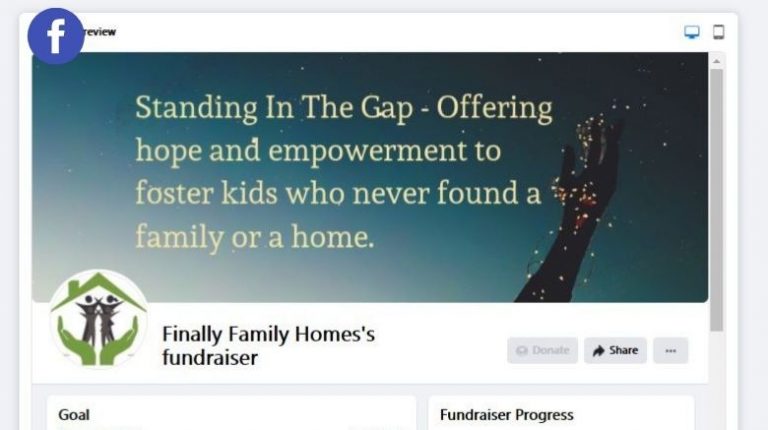42 Aging Out of Foster Care Statistics
Foster care is difficult for children. If they weren’t traumatized before entering foster care, being taken away from your familiar settings and placed somewhere altogether new will traumatize them. Youth placed in foster care deal with trauma and the statistics show it. We list the latest aging out of foster care statistics below.
But first, here’s a little background information for those who are unfamiliar with the situation around aging out of foster care.
What is the aging out process?
When children placed in foster care reach the maximum age that a state will support them (18 – 21) without being reunited with family or being placed in a permanent home, it’s called aging out. Sometimes it’s as cold as having a kid sign paperwork on their 18th birthday and sending them out of a group home onto the streets with a trash bag of their clothing. We’ve heard of social workers in Los Angeles picking kids up from their foster homes and taking them straight to a homeless shelter.
But there are times when it goes much better. It depends on who is in the young adult’s life, what the state has for support, and whether all the protocols are being followed. Some kids struggle their way to great success. They become PhDs, MDs, artists, lawmakers, and more. They find support along the way to help them overcome the hurdles.
Why aging out of foster care is bad
Kids who age out are often sent out of their foster homes the day they turn 18 without any resources. Most have no supportive adult to help them navigate the challenges of transitioning to independent living. Everyone needs a family and a home, even when they turn 18. That lack of stability and social support is what leads to many youths falling into the many struggles listed below in the statistics. Not only this but without healing, their attempts at success can get sabotaged by the impacts of the trauma they’ve experienced.
Foster Care Statistics
The foster care statistics for youth who never get placed with a forever home or family are heartbreaking.
20 percent of foster youth will become homeless the day they age out.
And approximately 20,000 age out every year. That means approximately 4,000 kids per year leave foster care into homelessness.
A young adult who ages out is less likely to graduate high school, attend college, or get a degree. This also increases the cost to society. According to the Annie E Casey Foundation, if aged out foster youth had the same outcomes as youth who didn’t age out, the US taxpayers would save $4.1 billion.
“The outcomes of law enforcement efforts against sex traffickers repeatedly support the NCMEC estimate. In a 2013 FBI 70-city nationwide raid, 60 percent of the victims came from foster care or group homes. In 2014, New York authorities estimated that 85 percent of sex trafficking victims were previously in the child welfare system” – Newsweek Op Ed
Aging Out of Foster Care Statistics in California
According to an article by KTLA, California officials have stated that “the average age of a juvenile human trafficking victim in California is between 12 and 14 years old, and 70 percent of victims come from the foster care system.” A deep desire for a family & distrust of authority can make youth particularly susceptible to being recruited by gangs for trafficking.
Currently, over 16,000 youth are waiting to be adopted in California.
71,000 are waiting to be adopted nationally.
Every year about 4,000 youth age out of care in California. According to Walden Family Services, 65% leave foster care at age 18 with no place to call home.
In a representative sample of foster youth in California, over one-third of aged-out 19-year-olds experience homelessness, and over 40% couch-surf (Courtney et al., 2016).

About 1400 age out in Los Angeles and of those, at least 400 become instantly homeless upon aging out.
According to the Los Angeles Homeless Services Authority, about 36 percent of chronically homeless youth in LA County said they were involved in foster care at some point in their lives. (From 2016, the most recently gathered data that included foster care histories).
As far as human trafficking in California, the statistics vary based on what the raid & rescue organizations report. From what we’ve seen the number varies between 60-90% of those rescued come from the foster care system.

We established Finally Family Homes in Santa Clarita, CA in Los Angeles county, to be right where the situation for aging out foster youth is the most challenging in the United States.
See the 2022 statistics above on transition-aged foster youth in Santa Clarita, including the kinds of placements and number of youth served. Learn more from the foster care statistics source here.
Los Angeles Homeless Youth Statistics
According to the 2019 Los Angeles Homeless Services Authority’s (LAHSA), Youth Count Data Summary,
2,818 transition age youth were homeless in LA County.
931 were sheltered
1887 were unsheltered.
LAHSA 2020 Homeless Count results saw an increase in homelessness among Transition Age Youth (TAY) Households.
According to the 2020 count,
3,651 transition age youth were homeless in LA County.
1,414 were sheltered
2,237 were unsheltered
This means that over 1,000 homeless youth in LA County came from foster care.
According to the THP-NMD & THP-Plus Annual Report 2019-20 from John Burton Advocates for Youth, over 1,000 youth were on waiting lists to get into the extended foster care program in California – more than doubling in the last 2 years. 291 were on the waiting list just in Los Angeles.
Former Foster Youth Attending Los Angeles District Colleges
These statistics were found among former foster youth attending Los Angeles Community Colleges, including our local LA Mission College and College of the Canyons.
Youth who had experienced foster care had the highest rate of struggles in each of these categories regardless of other demographics.
Among colleges students who had experienced foster care:
81% experience food insecurity
76% experience housing insecurity
38% experienced homelessness in the last 12 months
– WISCONSIN HOPE LAB | LACCD Report on Survey of Student Basic Needs
Aged Out Young Adults Disadvantaged Compared to Peers
“The typical youth—one who does not have a history of abuse and neglect—does not achieve true self-sufficiency until age 26. We know that parents invest a median amount of just under $50,000 on their young adult children after age 18, thus giving their children a chance at becoming productive, self-sufficient adults.
Foster youth, on the other hand, are thrust into the world at 18 years of age, with no safety net, and receive on average less than $10,000 of financial assistance—and most of that help goes toward the paltry 3% who manage to buck the odds and obtain a college degree. Most Transition-Aged Foster Youth receive virtually no financial help as they struggle toward adulthood.”
From a Special Report of the Children’s Advocacy Institute at The University of San Diego, LA
More Statistics on Aging Out
2018 US Statistics From the US Administration for Children and Families
Nearly 18,000 foster youth were not reunited or placed in permanent homes in 2018, aging out of foster care. Over 17,000 more had emancipation (leaving without a family or home) as their goal.
source: https://www.acf.hhs.gov/cb/resource/afcars-report-26
2018 Findings from the California Youth Transitions to Adulthood Study (CalYOUTH): Conditions of Youth at Age 21
Youth were asked, “If you could go as far as you wanted in school, how far would you go?”
Over 77% said they’d like to get a 4 year degree or beyond.
At age 21, only 1.2% had a 4 year degree.
Between the ages of 19-21, approximately 25% of youth experienced homelessness. The study reported the following:
“Among those who had been homeless, more than a quarter of youth had only been homeless one time, but over one-fifth of youth had been homeless five or more times.
Among youth who had been homeless, the majority reported that their longest episode of homelessness was between a week and a month long.
In total, more than half of the youth who had been homeless reported being homeless for more than 30 days since their last interview.” Interviews were conducted approximately 2 years apart.
source: https://www.chapinhall.org/wp-content/uploads/CY_YT_RE0518_1.pdf
Statistics from Kids Alliance
- Less than half of all foster youth in California graduate high school.
- Half of youth who have aged out of foster care end up homeless or incarcerated.
- 75% of young women in foster care report at least one pregnancy by age 21, compared to 33% in the general population.
- By grade 11, only 20% of students in foster care are proficient in English.
- Only 5% are proficient in math.
- 75% of students in foster care are performing below grade level.
Source: kids-alliance.org
National Foster Youth Institute Statistics
- More than 23,000 children will age out of the US foster care system every year.
- After reaching the age of 18, 20% of the children who were in foster care will become instantly homeless.
- Only half of foster kids who age out of the system will have gainful employment by the age of 24.
- Less than a 3% of children who have aged out of foster care earn a college degree at any point.
- Despite all of the challenges, 70% of foster kids regularly say that they would like to attend college one day.
Source: www.nfyi.org/51-useful-aging-out-of-foster-care-statistics-social-race-media/
Aging Out of Foster Care Statistics Can Change
Finally Family Homes has a plan to change those aging out of foster care statistics. Please read more about us and follow us on Instagram to keep up on all that we are doing with the help of people like you!
Finally Family Homes started in California, where the problem is most dire. If you’d like to learn more about what’s available to support foster youth right now nationally, read Aging Out of Foster Care Programs.
See how you can get involved or give support today alongside Finally Family Homes.
Join our newsletter and we’ll send you the latest on all that we are doing to make a difference in the lives of these youth and share messages of hope and inspiration to your inbox.






